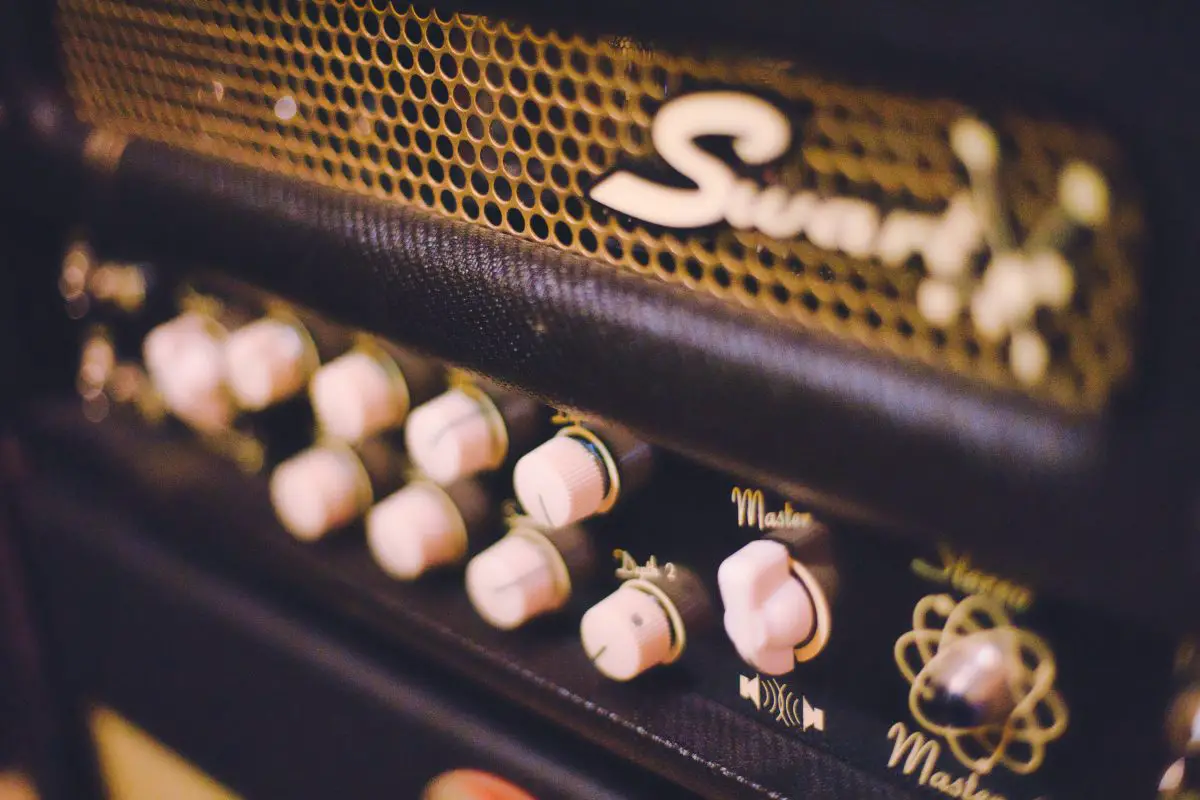
Ever wondered if every amp out there has the power to unleash that sweet, crunchy, and soul-stirring distortion? Prepare to have your eardrums blown and your fingers itching to strum as we embark on a wild journey through the heart-pounding world of guitar amp distortion! So, whether you’re just starting out on your six-string adventure or you’re already a riff-wielding virtuoso, strap in and prepare for an electrifying ride!
Do all guitar amps have distortion? No. Distortion isn’t a feature of every guitar amp. Some amplifiers offer a clean, natural sound with no distortion.
What is an amplifier?
An amplifier electronically multiplies natural loudness, enabling sound to be heard in previously unheard-of large, congested areas. When an electric instrument is electronically amplified, the sound it makes, (like when you pluck the strings of a guitar), is turned into an electronic signal.

The electronic signal is then played much louder through a loudspeaker. This again converts it to sound.
AKAI Professional MPK Mini MK3

AKAI Professional MPK Mini MK3
What is distortion?
We can typically think of distortion as any signal that is not pure. Distortion is a harsh audio warping or modification of the sound of an instrument caused by the amplifier. This doesn’t sound very pleasant, but it often is.
Many of the first electric guitarists used overdrive or slightly broken amps on purpose to get the warm, gritty sounds we associate with blues and rock. Nowadays, it’s common to make the sound of a broken or overdriven amp on purpose without damaging expensive equipment.
Many musicians use pedals that add sound effects or change the music after it has been recorded to get the right overtones. Distortion is now part of almost every aspect of modern music.
Do all guitar amps have distortion?
No, not all guitar amps have distortion. While distortion is a popular feature in many guitar amplifiers, there are also amps specifically designed for clean tones. The presence of distortion in a guitar amp depends on the amplifier’s design and intended purpose. Some amps prioritize delivering a clean and pristine tone without any distortion.
distortion is a popular feature in many guitar amplifiers
However, even if an amp doesn’t have built-in distortion, it can still produce distorted sounds by using external effects pedals or by cranking up the volume and pushing the amp’s natural limits. Ultimately, whether a guitar amp has distortion or not is a matter of personal preference and the desired musical style.
In reality, you may replace guitar amps in many categories based on how they cause distortion. This makes a significant impact on the sound. These are single-channel, multiple-channel, and digital modeling amplifiers.

Three common guitar amp types
Let’s delve into the distinctions between single-channel, multiple-channel, and digital modeling amplifiers, highlighting their impact on sound and versatility.
Single-channel amps
Single-channel amps, as the name suggests, feature only one channel for amplification. They are known for their simplicity and straightforward operation. Typically, these amps provide a pure and unadulterated tone, focusing on delivering a specific sound characteristic, such as clean or overdriven.
Single-channel amps are often favored by musicians who prioritize a straightforward approach and prefer to use external effects pedals or their guitar’s volume and tone controls to shape their sound.
Multiple-channel amps
Multiple-channel amps offer the flexibility of switching between different preamp channels, each with its own distinct sound characteristics. This allows guitarists to access various tones within the same amplifier. For example, a multiple-channel amp might include a clean channel, a crunch/overdrive channel, and a high-gain/distortion channel.
These amps are popular among musicians who desire versatility and the convenience of accessing different tones without relying heavily on external effects pedals. Multiple-channel amps can accommodate a wide range of musical styles, from blues to heavy metal.
Digital modeling amps
Digital modeling amps leverage advanced digital signal processing technology to simulate the sound characteristics of various amplifier types, effects pedals, and speaker cabinets. These amps offer an extensive range of amp models and customizable presets, allowing guitarists to recreate the tones of iconic amplifiers from different eras.
Digital modeling amps often come equipped with built-in effects, including reverbs, delays, modulation, and more. They provide immense versatility and the ability to experiment with different sounds, making them popular for recording, practice, and live performances.
What are some types of distortion?
It might be helpful to think of distortion as an all-encompassing term for any “dirty” guitar sound, regardless of what causes it, such as a torn speaker, a stomp box, a rack effect, or an amp turned up past its clean sound-producing limit. Below are some of the different kinds of distortion.
Overdrive distortion
This is usually called overdrive when you “push” an amp past the point where it can make a clean tone. However, because of the way tube amps are built, which makes them sound “clean” at lower volumes and somewhat distorted at louder volumes, overdrive is frequently simple to accomplish in tube amps.
Although several overdrive stomp boxes are available, their intended effect is that of an amp turned up over its clean tone limit.
The primary distinction between overdrive effects (amplifier or pedal) and distortion effects is that the former often aims to produce the same degree of distortion regardless of loudness. Overdrive units work like tube amps, making cleaner sounds at lower volumes and more distortion as the volume increases.
Fuzz distortion
Fuzz is a different kind of guitar distortion. The Stones’ song “Satisfaction” features distortion. However, it is a fuzz-style distortion rather than an overdrive distortion. Or, when you hear the Kinks’ “You Got Me,” you’re hearing distortion brought on by purposefully broken speakers, not overdrive.
Clean distortion
The sound you get by utilizing distortion effects on a guitar while maintaining a crisp, gritty tone is called “clean distortion.” This configuration is ideal for guitarists who play blues and classic rock since it lacks any intrusive background noise or fuzz.
If you want even more tips and insights, watch this video called “YOU DON’T NEED AN AMP – DISTORTION PEDAL” from the Ola Englund YouTube channel.
Frequently asked questions (FAQ)
Do you still have questions? Below are some of the most commonly asked questions about guitar amps.
How do you get distortion on your amp?
Try setting your amplifier’s controls to 7-9 gain, 4-5 bass, 5-7 mids, and 5-7 treble for a distorted tone. Consider lowering the mids and raising the treble and bass for metal. Lower the gain and boost the mids for severe rock distortion.
What distorts a guitar amp?
When you “overdrive” the valves in an amplifier, you get vacuum tube distortion, also called “valve” distortion. Overdriving, to put it simply, is pushing the tubes past their typical rated maximum.
Because of this, valve amplifiers, especially those that use class-A triodes, tend to make both even and odd harmonics through a process called “asymmetric soft clipping.”
Can you get distortion without a pedal?
Yes. Turn on the amp’s overdrive channel, also known as “crunch” or “drive,” depending on the amp, to distort without a pedal. Turning it on instantly gives you a nice crunch without using the pedal by overdriving your amp’s tubes.
Conclusion
There you have it! Every guitar amp doesn’t come with distortion, and that’s because some are built for clean sounds while others focus on overdrive or crunch. The best way to know which is right for you is to listen to different models and decide which one you like most.
So, does your amp have distortion? And did I cover everything you wanted to know? Let me know in the comments section below (I read and reply to every comment). If you found this article helpful, share it with a friend, and check out my full blog for more tips and tricks on music production. Thanks for reading, and never stop making music.
This article covered what an amplifier is, what distortion is, and what causes it. Here are some key takeaways:
Key takeaways
- An electronic device called an amplifier improves one part of a signal while keeping the other parts of the signal the same (source).
- Any warping or modification of the clean chords your instrument “should” play is distortion.
- First and foremost, an amp’s capacity being exceeded can cause distortion.
- Your amp should have a knob labeled “gain,” “overdrive,” or “distortion” that you can turn to produce a distortion effect.
- Since distortion is a constructed effect rather than a natural one, you must add valves, transistors, or digital modeling to the signal to achieve it.















